#Medium-Range Ballistic Missile
Text
Aegis Combat System continues effective missile interception
By Thomas F. Keefer, The Chicago Times
March 31, 2024
HAWAII – The Lockheed Martin Corporation announced Friday that the United States Navy’s Aegis Combat System successfully intercepted a simulated medium-range ballistic missile (MRBM) target during Flight Test Aegis Weapon System-32 (FTM-32) off the coast of Kauai, Hawaii.
FTM-32, a collaborative effort between the Missile Defense Agency…

View On WordPress
#AEGIS BASELINE 9#AEGIS COMBAT SYSTEM#DDG 125#DDG 88#HAWAII#KAUAI#LOCKHEED MARTIN#MEDIUM RANGE BALLISTIC MISSILE#MISSILE DEFENSE AGENCY#MRBM#SHIELD OF THE FLEET#STELLAR SISYPHUS#UNITED STATES NAVY#USS JACK H LUCAS#USS PREBLE
0 notes
Text
On october 16, 1962, John F. Kennedy and his advisers were stunned to learn that the Soviet Union was, without provocation, installing nuclear-armed medium- and intermediate-range ballistic missiles in Cuba. With these offensive weapons, which represented a new and existential threat to America, Moscow significantly raised the ante in the nuclear rivalry between the superpowers—a gambit that forced the United States and the Soviet Union to the brink of nuclear Armageddon. On October 22, the president, with no other recourse, proclaimed in a televised address that his administration knew of the illegal missiles, and delivered an ultimatum insisting on their removal, announcing an American “quarantine” of Cuba to force compliance with his demands. While carefully avoiding provocative action and coolly calibrating each Soviet countermeasure, Kennedy and his lieutenants brooked no compromise; they held firm, despite Moscow’s efforts to link a resolution to extrinsic issues and despite predictable Soviet blustering about American aggression and violation of international law. In the tense 13‑day crisis, the Americans and Soviets went eyeball-to-eyeball. Thanks to the Kennedy administration’s placid resolve and prudent crisis management—thanks to what Kennedy’s special assistant Arthur Schlesinger Jr. characterized as the president’s “combination of toughness and restraint, of will, nerve, and wisdom, so brilliantly controlled, so matchlessly calibrated, that [it] dazzled the world”—the Soviet leadership blinked: Moscow dismantled the missiles, and a cataclysm was averted.
Every sentence in the above paragraph describing the Cuban missile crisis is misleading or erroneous. But this was the rendition of events that the Kennedy administration fed to a credulous press; this was the history that the participants in Washington promulgated in their memoirs; and this is the story that has insinuated itself into the national memory—as the pundits’ commentaries and media coverage marking the 50th anniversary of the crisis attested.
Scholars, however, have long known a very different story: since 1997, they have had access to recordings that Kennedy secretly made of meetings with his top advisers, the Executive Committee of the National Security Council (the “ExComm”). Sheldon M. Stern—who was the historian at the John F. Kennedy Library for 23 years and the first scholar to evaluate the ExComm tapes—is among the numerous historians who have tried to set the record straight. His new book marshals irrefutable evidence to succinctly demolish the mythic version of the crisis. Although there’s little reason to believe his effort will be to any avail, it should nevertheless be applauded.
Reached through sober analysis, Stern’s conclusion that “John F. Kennedy and his administration, without question, bore a substantial share of the responsibility for the onset of the Cuban missile crisis” would have shocked the American people in 1962, for the simple reason that Kennedy’s administration had misled them about the military imbalance between the superpowers and had concealed its campaign of threats, assassination plots, and sabotage designed to overthrow the government in Cuba—an effort well known to Soviet and Cuban officials.
In the 1960 presidential election, Kennedy had cynically attacked Richard Nixon from the right, claiming that the Eisenhower-Nixon administration had allowed a dangerous “missile gap” to grow in the U.S.S.R.’s favor. But in fact, just as Eisenhower and Nixon had suggested—and just as the classified briefings that Kennedy received as a presidential candidate indicated—the missile gap, and the nuclear balance generally, was overwhelmingly to America’s advantage. At the time of the missile crisis, the Soviets had 36 intercontinental ballistic missiles (ICBMs), 138 long-range bombers with 392 nuclear warheads, and 72 submarine-launched ballistic-missile warheads (SLBMs). These forces were arrayed against a vastly more powerful U.S. nuclear arsenal of 203 ICBMs, 1,306 long-range bombers with 3,104 nuclear warheads, and 144 SLBMs—all told, about nine times as many nuclear weapons as the U.S.S.R. Nikita Khrushchev was acutely aware of America’s huge advantage not just in the number of weapons but in their quality and deployment as well.
Kennedy and his civilian advisers understood that the missiles in Cuba did not alter the strategic nuclear balance.
Moreover, despite America’s overwhelming nuclear preponderance, JFK, in keeping with his avowed aim to pursue a foreign policy characterized by “vigor,” had ordered the largest peacetime expansion of America’s military power, and specifically the colossal growth of its strategic nuclear forces. This included deploying, beginning in 1961, intermediate-range “Jupiter” nuclear missiles in Italy and Turkey—adjacent to the Soviet Union. From there, the missiles could reach all of the western U.S.S.R., including Moscow and Leningrad (and that doesn’t count the nuclear-armed “Thor” missiles that the U.S. already had aimed at the Soviet Union from bases in Britain).
The Jupiter missiles were an exceptionally vexing component of the U.S. nuclear arsenal. Because they sat aboveground, were immobile, and required a long time to prepare for launch, they were extremely vulnerable. Of no value as a deterrent, they appeared to be weapons meant for a disarming first strike—and thus greatly undermined deterrence, because they encouraged a preemptive Soviet strike against them. The Jupiters’ destabilizing effect was widely recognized among defense experts within and outside the U.S. government and even by congressional leaders. For instance, Senator Albert Gore Sr., an ally of the administration, told Secretary of State Dean Rusk that they were a “provocation” in a closed session of the Senate Foreign Relations Committee in February 1961 (more than a year and a half before the missile crisis), adding, “I wonder what our attitude would be” if the Soviets deployed nuclear-armed missiles to Cuba. Senator Claiborne Pell raised an identical argument in a memo passed on to Kennedy in May 1961.
Given America’s powerful nuclear superiority, as well as the deployment of the Jupiter missiles, Moscow suspected that Washington viewed a nuclear first strike as an attractive option. They were right to be suspicious. The archives reveal that in fact the Kennedy administration had strongly considered this option during the Berlin crisis in 1961.
It’s little wonder, then, that, as Stern asserts—drawing on a plethora of scholarship including, most convincingly, the historian Philip Nash’s elegant 1997 study, The Other Missiles of October—Kennedy’s deployment of the Jupiter missiles “was a key reason for Khrushchev’s decision to send nuclear missiles to Cuba.” Khrushchev reportedly made that decision in May 1962, declaring to a confidant that the Americans “have surrounded us with bases on all sides” and that missiles in Cuba would help to counter an “intolerable provocation.” Keeping the deployment secret in order to present the U.S. with a fait accompli, Khrushchev may very well have assumed America’s response would be similar to his reaction to the Jupiter missiles—rhetorical denouncement but no threat or action to thwart the deployment with a military attack, nuclear or otherwise. (In retirement, Khrushchev explained his reasoning to the American journalist Strobe Talbott: Americans “would learn just what it feels like to have enemy missiles pointing at you; we’d be doing nothing more than giving them a little of their own medicine.”)
Khrushchev was also motivated by his entirely justifiable belief that the Kennedy administration wanted to destroy the Castro regime. After all, the administration had launched an invasion of Cuba; had followed that with sabotage, paramilitary assaults, and assassination attempts—the largest clandestine operation in the history of the CIA—and had organized large-scale military exercises in the Caribbean clearly meant to rattle the Soviets and their Cuban client. Those actions, as Stern and other scholars have demonstrated, helped compel the Soviets to install the missiles so as to deter “covert or overt US attacks”—in much the same way that the United States had shielded its allies under a nuclear umbrella to deter Soviet subversion or aggression against them.
Khrushchev was also motivated by his entirely justifiable belief that the Kennedy administration wanted to destroy the Castro regime. After all, the administration had launched an invasion of Cuba; had followed that with sabotage, paramilitary assaults, and assassination attempts—the largest clandestine operation in the history of the CIA—and had organized large-scale military exercises in the Caribbean clearly meant to rattle the Soviets and their Cuban client. Those actions, as Stern and other scholars have demonstrated, helped compel the Soviets to install the missiles so as to deter “covert or overt US attacks”—in much the same way that the United States had shielded its allies under a nuclear umbrella to deter Soviet subversion or aggression against them. [...]
The Soviets were entirely justified in their belief that Kennedy wanted to destroy the Castro regime.
Kennedy and his civilian advisers understood that the missiles in Cuba did not alter the strategic nuclear balance. Although Kennedy asserted in his October 22 televised address that the missiles were “an explicit threat to the peace and security of all the Americas,” he in fact appreciated, as he told the ExComm on the first day of the crisis, that “it doesn’t make any difference if you get blown up by an ICBM flying from the Soviet Union or one that was 90 miles away. Geography doesn’t mean that much.” America’s European allies, Kennedy continued, “will argue that taken at its worst the presence of these missiles really doesn’t change” the nuclear balance. [...]
Moreover, unlike Soviet ICBMs, the missiles in Cuba required several hours to be prepared for launch. Given the effectiveness of America’s aerial and satellite reconnaissance (amply demonstrated by the images of missiles in the U.S.S.R. and Cuba that they yielded), the U.S. almost certainly would have had far more time to detect and respond to an imminent Soviet missile strike from Cuba than to attacks from Soviet bombers, ICBMs, or SLBMs. [...]
On that first day of the ExComm meetings, Bundy asked directly, “What is the strategic impact on the position of the United States of MRBMs in Cuba? How gravely does this change the strategic balance?” McNamara answered, “Not at all”—a verdict that Bundy then said he fully supported. The following day, Special Counsel Theodore Sorensen summarized the views of the ExComm in a memorandum to Kennedy. “It is generally agreed,” he noted, “that these missiles, even when fully operational, do not significantly alter the balance of power—i.e., they do not significantly increase the potential megatonnage capable of being unleashed on American soil, even after a surprise American nuclear strike.”
Sorensen’s comment about a surprise attack reminds us that while the missiles in Cuba did not add appreciably to the nuclear menace, they could have somewhat complicated America’s planning for a successful first strike—which may well have been part of Khrushchev’s rationale for deploying them. If so, the missiles paradoxically could have enhanced deterrence between the superpowers, and thereby reduced the risk of nuclear war.
Yet, although the missiles’ military significance was negligible, the Kennedy administration advanced on a perilous course to force their removal. The president issued an ultimatum to a nuclear power—an astonishingly provocative move, which immediately created a crisis that could have led to catastrophe. He ordered a blockade on Cuba, an act of war that we now know brought the superpowers within a hair’s breadth of nuclear confrontation. The beleaguered Cubans willingly accepted their ally’s weapons, so the Soviet’s deployment of the missiles was fully in accord with international law. But the blockade, even if the administration euphemistically called it a “quarantine,” was, the ExComm members acknowledged, illegal. As the State Department’s legal adviser recalled, “Our legal problem was that their action wasn’t illegal.” Kennedy and his lieutenants intently contemplated an invasion of Cuba and an aerial assault on the Soviet missiles there—acts extremely likely to have provoked a nuclear war. In light of the extreme measures they executed or earnestly entertained to resolve a crisis they had largely created, the American reaction to the missiles requires, in retrospect, as much explanation as the Soviet decision to deploy them—or more.
The Soviets suspected that the U.S. viewed a nuclear first strike as an attractive option. They were right to be suspicious. [...]
What largely made the missiles politically unacceptable was Kennedy’s conspicuous and fervent hostility toward the Castro regime—a stance, Kennedy admitted at an ExComm meeting, that America’s European allies thought was “a fixation” and “slightly demented.”
In his presidential bid, Kennedy had red-baited the Eisenhower-Nixon administration, charging that its policies had “helped make Communism’s first Caribbean base.” Given that he had defined a tough stance toward Cuba as an important election issue, and given the humiliation he had suffered with the Bay of Pigs debacle, the missiles posed a great [electoral] hazard to Kennedy. [...]
But even weightier than the domestic political catastrophe likely to befall the administration if it appeared to be soft on Cuba was what Assistant Secretary of State Edwin Martin called “the psychological factor” that we “sat back and let ’em do it to us.” He asserted that this was “more important than the direct threat,” and Kennedy and his other advisers energetically concurred. Even as Sorensen, in his memorandum to the president, noted the ExComm’s consensus that the Cuban missiles didn’t alter the nuclear balance, he also observed that the ExComm nevertheless believed that “the United States cannot tolerate the known presence” of missiles in Cuba “if our courage and commitments are ever to be believed by either allies or adversaries” (emphasis added). [...]
The risks of such a cave-in, Kennedy and his advisers held, were distinct but related. The first was that America’s foes would see Washington as pusillanimous; the known presence of the missiles, Kennedy said, “makes them look like they’re coequal with us and that”—here Treasury Secretary Douglas Dillon interrupted: “We’re scared of the Cubans.” The second risk was that America’s friends would suddenly doubt that a country given to appeasement could be relied on to fulfill its obligations.
In fact, America’s allies, as Bundy acknowledged, were aghast that the U.S. was threatening nuclear war over a strategically insignificant condition—the presence of intermediate-range missiles in a neighboring country—that those allies (and, for that matter, the Soviets) had been living with for years. In the tense days of October 1962, being allied with the United States potentially amounted to, as Charles de Gaulle had warned, “annihilation without representation.” It seems never to have occurred to Kennedy and the ExComm that whatever Washington gained by demonstrating the steadfastness of its commitments, it lost in an erosion of confidence in its judgment.
This approach to foreign policy was guided—and remains guided—by an elaborate theorizing rooted in a school-playground view of world politics rather than the cool appraisal of strategic realities. It put—and still puts—America in the curious position of having to go to war to uphold the very credibility that is supposed to obviate war in the first place.
If the administration’s domestic political priorities alone dictated the removal of the Cuban missiles, a solution to Kennedy’s problem would have seemed pretty obvious: instead of a public ultimatum demanding that the Soviets withdraw their missiles from Cuba, a private agreement between the superpowers to remove both Moscow’s missiles in Cuba and Washington’s missiles in Turkey. (Recall that the Kennedy administration discovered the missiles on October 16, but only announced its discovery to the American public and the Soviets and issued its ultimatum on the 22nd.)
The administration, however, did not make such an overture to the Soviets. Instead, by publicly demanding a unilateral Soviet withdrawal and imposing a blockade on Cuba, it precipitated what remains to this day the most dangerous nuclear crisis in history. In the midst of that crisis, the sanest and most sensible observers—among them diplomats at the United Nations and in Europe, the editorial writers for the Manchester Guardian, Walter Lippmann, and Adlai Stevenson—saw a missile trade as a fairly simple solution. In an effort to resolve the impasse, Khrushchev himself openly made this proposal on October 27. According to the version of events propagated by the Kennedy administration (and long accepted as historical fact), Washington unequivocally rebuffed Moscow’s offer and instead, thanks to Kennedy’s resolve, forced a unilateral Soviet withdrawal.
Beginning in the late 1980s, however, the opening of previously classified archives and the decision by a number of participants to finally tell the truth revealed that the crisis was indeed resolved by an explicit but concealed deal to remove both the Jupiter and the Cuban missiles. Kennedy in fact threatened to abrogate if the Soviets disclosed it. He did so for the same reasons that had largely engendered the crisis in the first place—domestic politics and the maintenance of America’s image as the indispensable nation. A declassified Soviet cable reveals that Robert Kennedy—whom the president assigned to work out the secret swap with the U.S.S.R.’s ambassador to Washington, Anatoly Dobrynin—insisted on returning to Dobrynin the formal Soviet letter affirming the agreement, explaining that the letter “could cause irreparable harm to my political career in the future.”
Only a handful of administration officials knew about the trade; most members of the ExComm, including Vice President Lyndon Johnson, did not. And in their effort to maintain the cover-up, a number of those who did, including McNamara and Rusk, lied to Congress. JFK and others tacitly encouraged the character assassination of Stevenson, allowing him to be portrayed as an appeaser who “wanted a Munich” for suggesting the trade—a deal that they vociferously maintained the administration would never have permitted.
Arthur Schlesinger Jr. “repeatedly manipulated and obscured the facts.”
The patient spadework of Stern and other scholars has since led to further revelations. Stern demonstrates that Robert Kennedy hardly inhabited the conciliatory and statesmanlike role during the crisis that his allies described in their hagiographic chronicles and memoirs and that he himself advanced in his posthumously published book, Thirteen Days. In fact, he was among the most consistently and recklessly hawkish of the president’s advisers, pushing not for a blockade or even air strikes against Cuba but for a full-scale invasion as “the last chance we will have to destroy Castro.” Stern authoritatively concludes that “if RFK had been president, and the views he expressed during the ExComm meetings had prevailed, nuclear war would have been the nearly certain outcome.” He justifiably excoriates the sycophantic courtier Schlesinger, whose histories “repeatedly manipulated and obscured the facts” and whose accounts—“profoundly misleading if not out-and-out deceptive”—were written to serve not scholarship but the Kennedys.
Although Stern and other scholars have upended the panegyrical version of events advanced by Schlesinger and other Kennedy acolytes, the revised chronicle shows that JFK’s actions in resolving the crisis—again, a crisis he had largely created—were reasonable, responsible, and courageous. Plainly shaken by the apocalyptic potentialities of the situation, Kennedy advocated, in the face of the bellicose and near-unanimous opposition of his pseudo-tough-guy advisers, accepting the missile swap that Khrushchev had proposed. “To any man at the United Nations, or any other rational man, it will look like a very fair trade,” he levelheadedly told the ExComm. “Most people think that if you’re allowed an even trade you ought to take advantage of it.” He clearly understood that history and world opinion would condemn him and his country for going to war—a war almost certain to escalate to a nuclear exchange—after the U.S.S.R. had publicly offered such a reasonable quid pro quo. Khrushchev’s proposal, the historian Ronald Steel has noted, “filled the White House advisors with consternation—not least of all because it appeared perfectly fair.” [...]
By successfully hiding the deal from the vice president, from a generation of foreign-policy makers and strategists, and from the American public, Kennedy and his team reinforced the dangerous notion that firmness in the face of what the United States construes as aggression, and the graduated escalation of military threats and action in countering that aggression, makes for a successful national-security strategy—really, all but defines it.
The president and his advisers also reinforced the concomitant view that America should define a threat not merely as circumstances and forces that directly jeopardize the safety of the country, but as circumstances and forces that might indirectly compel potential allies or enemies to question America’s resolve.[...]
This notion that standing up to aggression (however loosely and broadly defined) will deter future aggression (however loosely and broadly defined) fails to weather historical scrutiny. [...]
Moreover, the idea that a foreign power’s effort to counter the overwhelming strategic supremacy of the United States—a country that spends nearly as much on defense as does the rest of the world combined—ipso facto imperils America’s security is profoundly misguided. Just as Kennedy and his advisers perceived a threat in Soviet efforts to offset what was in fact a destabilizing U.S. nuclear hegemony, so today, both liberals and conservatives oxymoronically assert that the safety of the United States demands that the country must “balance” China by maintaining its strategically dominant position in East Asia and the western Pacific—that is, in China’s backyard. This means that Washington views as a hazard Beijing’s attempts to remedy the weakness of its own position, even though policy makers acknowledge that the U.S. has a crushing superiority right up to the edge of the Asian mainland. America’s posture, however, reveals more about its own ambitions than it does about China’s. Imagine that the situation were reversed, and China’s air and naval forces were a dominant and potentially menacing presence on the coastal shelf of North America. Surely the U.S. would want to counteract that preponderance. In a vast part of the globe, stretching from the Canadian Arctic to Tierra del Fuego and from Greenland to Guam, the U.S. will not tolerate another great power’s interference. Certainly America’s security wouldn’t be jeopardized if other great powers enjoy their own (and for that matter, smaller) spheres of influence.
This esoteric strategizing—this misplaced obsession with credibility, this dangerously expansive concept of what constitutes security—which has afflicted both Democratic and Republican administrations, and both liberals and conservatives, is the antithesis of statecraft, which requires discernment based on power, interest, and circumstance. It is a stance toward the world that can easily doom the United States to military commitments and interventions in strategically insignificant places over intrinsically trivial issues. It is a stance that can engender a foreign policy approximating paranoia in an obdurately chaotic world abounding in states, personalities, and ideologies that are unsavory and uncongenial—but not necessarily mortally hazardous.
2013
1K notes
·
View notes
Text
Nevatim Airbase in the Negev Desert has been struck by at least 7 Iranian medium-range ballistic missiles. 14 April 2024
67 notes
·
View notes
Text

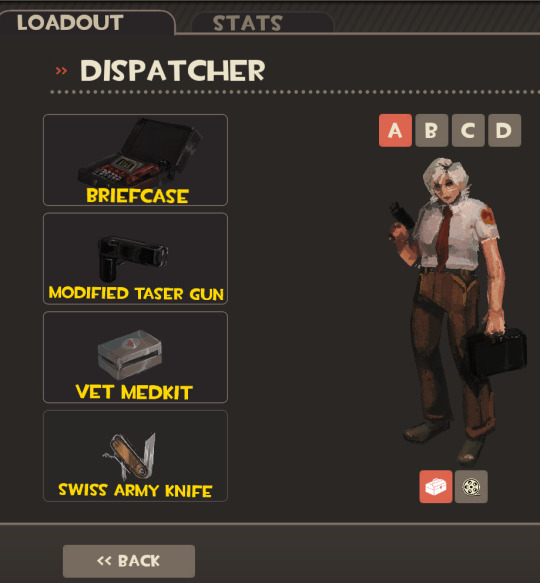
MEET THE DISPATCHER
The Dispatcher is the RED Team's 10th mercenary who exists outside the boundaries of being an offense/defense/support class. Real name "Naima Les" (lit: Nameless) and uses she/he/they pronouns.
His main stock item is a briefcase, giving him a topographic map and her teammate's locations, who she can aid through missile strikes, traps, or air supply drops.
Used to bureaucratic jungles, tax write-offs, and the occasional contract killing for a shady yet powerful firm, Dispatcher has to swallow their arrogance and learn how to fight alongside the team after a sudden transfer.
(more art and weapon ideas below! warning. p long.)


Dispatcher's stock kit (125 HP, 93% speed, weapon and PDA keybinds similar to Spy/Engineer's):
(PDA) Briefcase:
- Includes topographic map/sensors of teammates (coordinate interaction), touch-tone phone to communicate (Scout’s headset now has a reason to exist). Connected to TF Industries satellite, has automated air support, and [SPOILERS].
- Takes medium set-up time and hauling open briefcase slows speed to 85%.
Air strike (Offense)
- Calls upon a drone from the air to strike general location of enemy based on teammate’s vision (think spectating when waiting to respawn). Not suited for high speed fights; missile has timer to land. Functions similarly to Soldier’s/Demo’s explosions. Low ammo count.
Stock Missile: A ballistic missile. The missile knows where it is at all times. Base: 90 / Crit: 270.
Sugar Glider: Free-fall bomb. Always Mini-crits, but less precise - easier to damage teammates.
Artillery Battery: Smaller missiles rain down in a group. Splash damage, faster reload/higher ammo count.
Precision-Guided Munition: Guaranteed to not hit teammates. -50% damage and no crits.
Stun traps (Defense)
- Drops stun traps to slow enemies down in hot spots (think Control Points/Payload). Functions similar to Primary taser. Can be changed for caltrops (bleeding damage) or something else, I dunno.
Air supply (Support)
- Basically interpretation of med kits/ammo on the ground. Canon cool down and wait to replenish teammate’s health/ammo/metal from afar - no biggie.
(Primary) Modified taser gun:
- Stuns enemy on impact, needs numerous shots to kill. Base: 40 damage.
2. (Secondary) Med kit: (veterinarian) (for animals) (dogs. mutts)
- Lore wise, meant for animals. Not as good as air supply health kit, but no drop time. Functions similarly to Heavy’s Sandvich.
(Melee) Swiss Army Knife / Knife of All Trades (KOAT):
- Weak in itself (30 damage) but can cause bleeding damage. If hitting teammate, temporarily buffs their primary weapon.

just some potential weapons for him! i'm more of a visual concept designer so their kit might be pretty op or underpowered, but the general basis is nerfed speed (in everything) and attack for whole-map range tradeoff. potentially a similar playstyle as engie (with a whole chilling in a lawn chair taunt), though in an alternate universe there could be a loadout for a battle!patches. i GUESS in actuality she would be counted as support, but i didn't want to ruin the 3x3 style.
anyways. she's the star of a canon/oc fic i have. tootles now.
#tf2 oc#tf2 10th class#10th class oc#dispatcher#tf2#tf2 fanart#team fortress 2#🚐 art#frontiersmen#finally. the accumulation of months long autism. and still going strong#my petit choufleur. my mama mia. my silly billy.#concept art#tf2 concept art#weapon concept
127 notes
·
View notes
Text
Commanders and advisors from Iran’s elite Islamic Revolutionary Guard Corps are on the ground in Yemen and playing a direct role in Houthi rebel attacks on commercial traffic in the Red Sea.
The IRGC has stationed missile and drone trainers and operators in Yemen, as well as personnel providing tactical intelligence support to the Houthis, U.S. and Middle East officials told Semafor. The IRGC, through its overseas Qods Force, has also overseen the transfer to the Houthis of the attack drones, cruise missiles, and medium-range ballistic missiles used in a string of strikes on Red Sea and Israeli targets in recent weeks, these officials said
Would you look at that! The US fucked around and now they're finding out.
I mean, I'm not a fan of the Iranian government. I haven't forgotten what they do to women, and the only reason the internet doesn't know what's going on with the Women Life Freedom movement is because Iran is suppressing posts. So I'm not heroizing them.
But I am saying I blame the US for this escalation.
The US and Israel bomb Palestine, Lebanon, and Syra.
The Houthis start attacking ships, making one demand: the genocide and blockade end. We can debate until we're blue in the face whether that is their true motive; certainly, they're not fine, upstanding people. But we ultimately don't know if it was their true motive because the only way to find out would have been to see if the attacks stopped after the end of the genocide.
But instead, the US and Israel keep committing genocide, and the UK joins the US in bombing Yemen.
Now Iran has sent military support.
It's all the US's fault.
29 notes
·
View notes
Text

I've had some ideas kicking around for a homebrew variant of the shadowhawk for a while now that I finally decided to put to paper (or I guess in this case Solaris Skunk Werks). My goal was to maintain the SHawk's character within the 55 ton trio (low heat, mid range harrasser with a flexible and balanced mixture of ballistic, energy, and missile weapons) while making it less aggressively mediocre than its succession war era designs thru the use of some lostech.

As the ashes began to settle following the Blakist Jihad, the Magistracy of Canopus determined they needed a cheaper and more flexible alternative to their fleet of advanced SHD-7Ms. Utilizing light fusion engine and multi-missile launch system technology from the allied Dutchy of Andurian, surplus production spares from the Canopan defense industry's work on the Taurian Brahma heavy mech, and the output of their own 7M line, Majesty Metals & Manufacturing produced three functioning prototypes for a design they called the Shadowhawk XA1. Despite costing 20% less than the model it was intended to compete with, internal politicking between MMM and the Magistracy government eventually sank the project. One of the prototypes was donated to the Magistracy Armed Forces Museum on Canopus IV while another was converted back into a standard 7M. The final prototype was sent to Capellan space for further testing but it vanishes from MMM's and the CCAF's records shortly before it was slated to arrive at the testing range.

Designed to fill the role of a medium-range skirmishing unit with a degree of inter-mission flexibility, the SHD-XA1 is built on the same endo steel chassis as the 7M. The bulky and fragile Core Tek 275 XL power plant has been downgraded to a more resilient experimental 275 light fusion engine while the 5 jump jets have been retained. 9 tons of armor leaves the pilot moderately well protected, relying on the XA1's speed and cover to protect the mech.
As opposed to the 7M, which saw fit to upgrade the size of the venerable 2H's weapons, the XA1 attempts to beat it in quantity amd accuracy. In the place of the guass rifle, a pair of light class 5 autocannons have been mounted in the left shoulder weapons pod, while an extended range medium laser has been installed in both the center torso and head. A five-tube multi-missile launcher is located in the right torso. All of the mech's direct fire weapons are networked to a targetting computer in the left torso, while all of its ballistic and missile systems draw from a shared 4-ton cellular ammunition stowage bay in the right torso. 10 double heat sinks allow a mechwarrior total freedom to use her weapons as she chooses, and while the torso-mounted weapons load leaves the mech vulnerable to flanking attacks and narrows its effective firing arcs, it does leave the arms free to engage in melee attacks once the mech closes.
The SHD-XA1's lends itself towards acting as a skirmisher or fast response unit that can tailor its exact role thru the use of specialty ammunition. Smoke and inferno missiles allow the mech to provide cover to advance under and anti-infantry/anti-vee capabilities with its MML, while the TC-linked autocannons can be configured to combat heavily armed units, aircraft, or fast moving targets through the use of armor piercing, flak, or precision ammo. The design's thin armor, fair mobility, and moderate range mean that the mechwarrior is advised to maintain distance and speed slightly behind the lime of battle until the enemy is weakened enough for her to close on and dispatch isolated unit.
This was fun to put together! Let me know what you think- should I do more homebrew mech variants?
#battletech#battlemech#mech talk#solaris skunk werks#medium mech#custom mech#magistracy of canopus#shadow hawk
23 notes
·
View notes
Text
IRGC has Released videos of the Launching of Ballistic Missiles towards Various Positions in Israel.
Seemingly "Kheibar Shekan" and Possible(?) "Ghadr-110 / Shahab-3B" Medium-Range Ballistic Missiles (MRBMs) were Launched.
Iranian R will hit U.S. bases if Washington helps Israel launch a retaliatory attack - Mohammad Bagheri According to Bagheri, Iran's overnight strikes on Israel have achieved their goals and the military operation is over.

The Commander-in-Chief of the Islamic Revolutionary Guard Corps (IRGC), Major General Hossein Salami has stated that last night’s Attack has marked a New Chapter in Iran’s Confrontation against Israel;
with him claiming that now anytime that Israel decides to conduct an Attack against Iranians, they will Face this Exact Response by the IRGC.
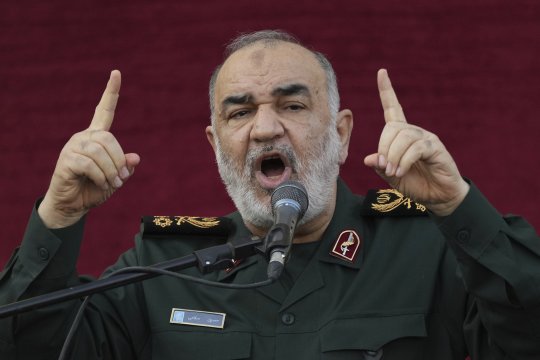
2 notes
·
View notes
Photo
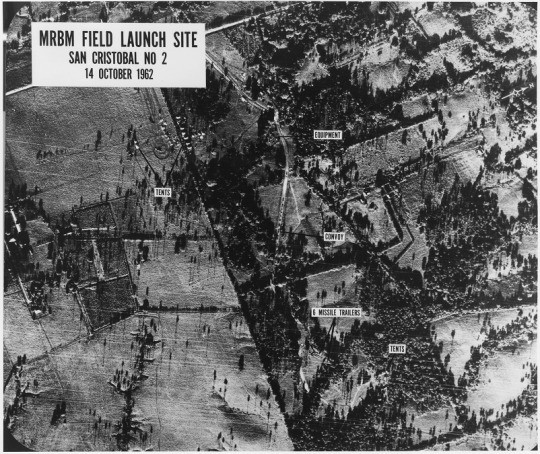
High altitude aerial reconnaissance photograph of medium-range ballistic missile (MRBM) launch site number 2 in San Cristobal, Cuba, 10/14/1962. From the Cuban Missile Crisis Briefing Materials.
File Unit: Briefing Board #08, MRBM Field Launch Site, San Cristobal No. 2, 14 October 1962, 10/14/1962 - 10/14/1962
Series: Briefing Materials, 1962 - 1963
Collection: Department of Defense Cuban Missile Crisis Briefing Materials, 1962 - 1963
Image Description: Aerial photo showing an area in San Cristobal, Cuba, with labels reading “Tents,” “Equipment,” “Convoy,” and “6 Missile Trailers.”
48 notes
·
View notes
Text
The British navy seized anti-tank missiles and fins for ballistic missile assemblies during a raid on a small boat heading from Iran likely to Yemen, authorities said Thursday, the latest such seizure in the Gulf of Oman.
The seizure by the Royal Navy comes after other seizures by French and U.S. forces in the region as Western powers increase their pressure on Iran, as it now enriches uranium closer than ever to weapons-grade levels. It also comes as regional and international powers try to find an end to the yearslong war gripping Yemen, the Arab world's poorest country, and as Iran arms Russia in its war on Ukraine.
The raid took place Feb. 23 after an American aircraft detected a small boat heading from Iran, with a helicopter from the Royal Navy frigate HMS Lancaster giving chase to the vessel, the British Defense Ministry said. The boat tried to reenter Iranian territorial water, but was stopped before it could.
Inside the boat, British troops found Russian 9M133 Kornet anti-tank guided missiles, known in Iran as “Dehlavieh,” the U.S. Navy's Mideast-based 5th Fleet and the British navy said. Those weapons have been seen in other seizures suspected to be from Iran and bound for Yemen.
Also on board were small fins that the U.S. Navy identified as jet vanes for medium-range ballistic missiles. Iranian components have helped build a missile arsenal for Yemen's Houthi rebels, who have held the country's capital, Sanaa, since 2014.
A United Nations resolution bans arms transfers to Yemen’s Iranian-backed Houthi rebels. Tehran long has denied arming the rebels, despite physical evidence, numerous seizures and experts tying the weapons back to Iran.
“This seizure by HMS Lancaster and the permanent presence of the Royal Navy in the Gulf region supports our commitment to uphold international law and tackle activity that threatens peace and security around the world," British Defense Secretary Ben Wallace said.
Vice Adm. Brad Cooper, the commander of the American 5th Fleet, said in a statement that this was the “seventh illegal weapon or drug interdiction in the last three months and yet another example of Iran’s increasing malign maritime activity across the region.”
Iranian state media did not immediately acknowledge the seizure. Iran's mission to the United Nations did not immediately respond to a request for comment.
The war in Yemen has deteriorated largely into a stalemate and spawned one of the world’s worst humanitarian crises. However, Saudi-led airstrikes haven’t been recorded in Yemen since the kingdom began a cease-fire at the end of March 2022, according to the Yemen Data Project.
That cease-fire expired in October despite diplomatic efforts to renew it. That has led to fears the war could again escalate. More than 150,000 people have been killed in Yemen during the fighting, including over 14,500 civilians.
8 notes
·
View notes
Text
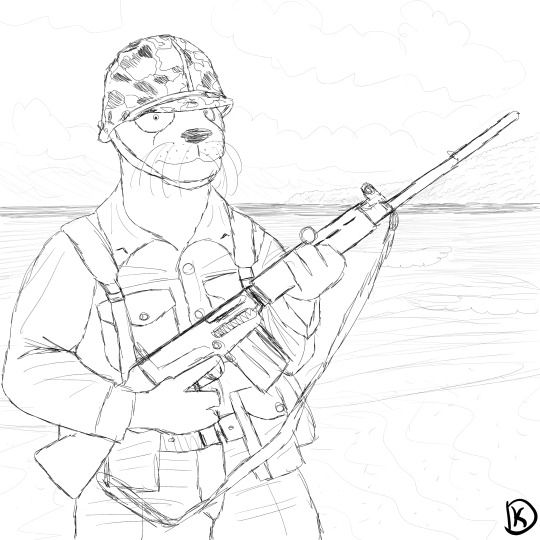
A Private First Class from 3rd Battalion, 5th Marine Regiment, is seen on a beach on the eastern shore of Puerto Rico during the Dominican Missile Crisis of 1962. He is armed with the standard issue United States Rifle, Caliber .280, M14, manufactured by Harrington & Richardson.
The Dominican Missile Crisis was sparked when Nazi Germany convinced the Axis-friendly dictator of the Dominican Republic - Rafael Trujilo - to allow the deployment of German medium and intermediate range ballistic missiles to the country. The debacle nearly caused World War III.
The Dominican Missile Crisis was a major test for the more muscular and assertive anti-fascist foreign policy of socialist President Jacob Olson. The successful navigation of the crisis would pave the way for the combat role of U.S. troops in South Africa the following year.
#furry#furry art#alternate history#alt history#politics#alternate timeline#alt timeline#alternate universe#alt universe#furries#worldbuilding#lore#furry story#furry writing#alternate cold war#Black Sun#KD's Art#KD's Writing#AU#conworld
10 notes
·
View notes
Text
Russia Ukraine war: Moscow launches air strikes as Putin’s forces ‘repel Kyiv attack on Crimea’

Crimean Bridge badly damaged after ‘multiple blasts’ in early hoursFor free real time breaking news alerts sent straight to your inbox sign up to our breaking news emailsSign up to our free breaking news emailsRussia launched overnight air attacks on Ukraine‘s south and east using drones and possibly ballistic missiles, Ukraine‘s Air Force and officials said early on Tuesday.A fire broke out at one of the “facilities” in the port of Mykolaiv late on Monday, the city mayor said. The port city provides Ukraine with access to the Black Sea.“It’s quite serious,” Mayor Oleksandr Senkevich said on the Telegram messaging app of the fire, adding that more detail will come in the morning.The southern port of Odesa and the Mykolaiv, Donetsk, Kherson, Zaporizhzhia and Dnipropetrovsk regions were under threat of Russian drone attacks, the Air Force said on the Telegram messaging app.It added that Russia may be using ballistic weaponry to attack the regions of Poltava, Cherkasy, Dnipropetrovsk, Kharkiv and Kirovohrad.It comes as Russian defence ministry said they repelled a Ukrainian drone attack on Crimea in the early hours of Tuesday - a day after an explosion on the bridge killed two people. The ministry said their air defences destroyed 17 drones and another 11 drones were intercepted by electronic warfare systems.
Key Points
Show latest update
1689667500Taiwan says looking to buy NASAMS air defence system from USTaiwan is looking to buy National Advanced Surface-to-Air Missile Systems, or NASAMS, from the United States to upgrade its air defence capabilities having seen how well they work in Ukraine, the island’s defence minister said on Tuesday.China, which claims Taiwan as its own territory, has stepped up military and political pressure over the past three years to try to force the democratically governed island to accept Beijing’s rule.NASAMS have been provided by the United States for use in Ukraine, with U.S. officials saying they have had a 100% success rate in intercepting Russian missiles.The system, developed and built by Raytheon Technologies and Norway’s Kongsberg Gruppen is a short- to medium-range ground-based air defence system that protects against drone, missile, and aircraft attack, which both Canada and Lithuania have also bought, or are buying for Ukraine.Asked on the sidelines of parliament about Taiwan buying NASAMS, Defence Minister Chiu Kuo-cheng said “certainly” there was a proposal to get them.“This work must be done in accordance with the enemy situation,” he said. “We have seen from the Russia-Ukraine war that these weapons definitely have good performance.”However, Taiwan has not received any official notification from the U.S. that they will sell NASAMS to Taipei, Chiu said.“But we need this work to be done as soon as possible.”The U.S., Taiwan’s main foreign source of weapons, formally makes notifications to the island about the arms Washington is willing to sell.The U.S. is bound by law to provide Taiwan with the means to defend itself, despite a lack of formal diplomatic relations. China routinely denounces such arms sales.Taiwan’s military has been paying close attention to the war in Ukraine for lessons on defending against a much larger opponent, for example by the use of drones.Maryam Zakir-Hussain18 July 2023 09:051689665497Odesa port infrastructure damaged in overnight Russian attacksRussia carried out missile and drone strikes on southern and eastern Ukraine overnight that caused damage to infrastructure in the Black Sea port of Odesa, Ukrainian officials said on Tuesday.The attacks followed a pledge of retaliation by Russia after a blast on a bridge linking Russia to the Crimean Peninsula on Monday. Moscow accused Ukraine of attacking the bridge, which is used to transport military supplies to Crimea, seized and annexed by Russia in 2014.Ukraine‘s air force said all six Kalibr missiles that were fired overnight, and 31 out of 36 drones, were shot down. The missiles and most of the drones were downed over Odesa and Mykolaiv regions in the south, while the rest were destroyed over the eastern regions of Donetsk, Kharkiv and Dnipropetrovsk.Ukraine‘s southern operational military command said that all six Kalibr cruise missiles fired by Russia overnight were shot down over Odesa, and that 21 Iranian-made Shahed drones were downed over the surrounding region.It said falling debris and blast waves damaged several homes and unspecified port infrastructure in Odesa, but gave few details. There was no word of any deaths but an elderly man was wounded in his home and was taken to hospital, it added.Odesa has often been attacked since Russia‘s full-scale invasion of Ukraine in February 2022 although the port was part of the U.N.-brokered deal allowing the safe Black Sea export of grain that Russia pulled out of on Monday.The latest attack was “further proof that the country-terrorist wants to endanger the lives of 400 million people in various countries that depend on Ukrainian food exports,” Andriy Yermak, the head of the presidential staff, said on Telegram.Maryam Zakir-Hussain18 July 2023 08:311689663012A B&Q generator and a commandeered truck: Behind the British Wolfram vehicles helping Ukraine fight PutinWolfram vehicles are now standard weaponry for the British military, with possible export orders pending, writes Kim Sengupta:The Wolfram armoured vehicle headed for the armoured column coming through the valley and fired salvos from its Brimstone missile system, setting the Russian T-57 tank aflame. Further along the frontline, a rider on an electronic bike was carrying out a lone attack, hitting the convoy at the flank using a Carl-Gustaf Mk4 rocket launcher.The operation taking place was a military exercise in Lulworth, Dorset – but the tactics and weapons being used were from the Ukraine war. The Wolfram was developed by the British military in the early days of Vladimir Putin’s invasion with an urgent plea for help from Kyiv to counter Russian heavy armour.Maryam Zakir-Hussain18 July 2023 07:501689662963Russia launches drones and missiles on Ukraine’s south and eastRussia launched overnight air attacks on Ukraine‘s south and east using drones and possibly ballistic missiles, Ukraine‘s Air Force and officials said early on Tuesday.A fire broke out at one of the “facilities” in the port of Mykolaiv late on Monday, the city mayor said. The port city provides Ukraine with access to the Black Sea.“It’s quite serious,” Mayor Oleksandr Senkevich said on the Telegram messaging app of the fire, adding that more detail will come in the morning.The southern port of Odesa and the Mykolaiv, Donetsk, Kherson, Zaporizhzhia and Dnipropetrovsk regions were under threat of Russian drone attacks, the Air Force said on the Telegram messaging app.It added that Russia may be using ballistic weaponry to attack the regions of Poltava, Cherkasy, Dnipropetrovsk, Kharkiv and Kirovohrad.Reuters could not independently verify the reports.Air raid alerts blared in many Ukrainian regions for hours, before being called off at around 04:30 a.m. local time (0130 GMT).Oleh Kiper, the head of the Odesa region’s military administration, said air defence systems there were engaged in repelling several waves of Russian drone attacks.Maryam Zakir-Hussain18 July 2023 07:491689661775Russia foils Ukrainian drone raid on CrimeaRussia repelled a Ukrainian drone attack on Crimea in the early hours of Tuesday, the Russian defence ministry said, a day after an attack on the Crimean bridge which damaged it and disrupted car traffic.Russian air defences destroyed 17 drones and another 11 drones were intercepted by electronic warfare systems, the ministry said. The “terrorist attack” did not inflict any damage or casualties, it added.On Monday, a blast knocked out Russia‘s bridge to Crimea in what Moscow called a strike by Ukrainian sea drones, killing two people.Moscow annexed the Crimean Peninsula from Ukraine in 2014.A satellite image shows a view of the Crimea bridge, in Kerch Strait (via REUTERS)Maryam Zakir-Hussain18 July 2023 07:291689658081Russia says Ukrainian drone raid foiled over CrimeaRussia’s defence ministry has claimed the country’s air defences and electronic countermeasure systems downed 28 Ukrainian drones over Crimea in the early hours of today, reported the RIA news agency.No casualties or damages have been seen so far, the ministry said.The raid comes a day after an attack by suspected Ukrainian sea drones on the Kerch Bridge to Crimea, which damaged it and disrupted car traffic.Ukraine has neither confirmed nor denied it carried out the attack.Arpan Rai18 July 2023 06:281689657455Crimea bridge attack: Everything to know about the Kerch BridgeThe Kerch Bridge saw traffic halted for six hours following reports of multiple explosions at around 3am yesterday.Europe’s longest bridge connects the Russian city of Krasnodar in the east to Kerch in Crimea, which was illegally annexed from Ukraine by Moscow in 2014.The Crimean Bridge runs over the Kerch Strait and is the only direct road link between Russia and the annexed peninsula. It consists of a separate roadway and railway – fortified by concrete stilts – which give way to a wider span held by steel arches at the point where ships pass between the Black Sea and the smaller Azov Sea.Here’s everything you need to know about the bridge, now a sensitive target in the invasion:Arpan Rai18 July 2023 06:171689655690Russia's Kharkiv troop levels close to Soviet-era, says UkraineRussia has amassed more than 100,000 troops and hundreds of tanks in Ukraine’s northeastern region of Kharkiv, officials in Ukraine said.“For two days running, the enemy has been actively on the offensive in the Kupiansk sector in Kharkiv region,” deputy defence minister Hanna Maliar wrote on Telegram.“We are defending. Heavy fighting is going on and the positions of both sides change dynamically several times a day.”More than 100,000 Russian troops and more than 900 tanks are now deployed in the area, said Serhiy Cherevatyi, spokesperson for Ukraine’s eastern command.Russia has drafted in airborne units and their best motorised infantry units to the area, he said, with the deployment now close to the around 120,000 seen in the region at the height of the Soviet Union’s 1979-89 war in Afghanistan.In May, around 370,000 Russian troops were inside Ukraine as a whole, according to an estimate by Ukraine’s intelligence chief Kyrylo Budanov.Russia is building up its defences and lining up troops near towns Kupiansk and nearby Lyman, regions retaken by Ukraine late last year as Kyiv’s forces remain stacked in the east and south for the counteroffensive launched several weeks ago.Large groups of Russian personnel were now trying to break through Ukrainian defence lines in the area, officials have said.“The enemy is concentrating everything in order to break through the defences of Ukrainian troops,” he said.“Our soldiers are holding their defences, preventing the enemy from fully seizing the initiative and they are continuously launching counterattacks,” the spokesperson said.Arpan Rai18 July 2023 05:481689653347Russia fires drones, missiles on Ukraine’s south and eastRussia resumed overnight air attacks in the early hours today on Ukraine’s south and east using drones and possibly ballistic missiles, Ukraine’s Air Force and officials said.A fire broke out at one of the “facilities” in the port of Mykolaiv late on Monday, the city mayor said. The port city provides Ukraine with access to the Black Sea.“It’s quite serious,” mayor Oleksandr Senkevich said about the blaze on the Telegram, adding that more detail will come in the morning.The air force warned that the southern port of Odesa and the Mykolaiv, Donetsk, Kherson, Zaporizhzhia and Dnipropetrovsk regions were under threat of Russian drone attacks.Russia may be using ballistic weaponry to attack the regions of Poltava, Cherkasy, Dnipropetrovsk, Kharkiv and Kirovohrad, it addedArpan Rai18 July 2023 05:091689649239Putin vows revenge after Crimea bridge attackVladimir Putin has said his defence ministry is readying proposals for a response to an overnight attack on a bridge in Crimea as he blamed Ukraine for carrying out the strike.Calling it a cruel and senseless act, the Russian president said the bridge “has not been used for military transportation for a long time”. He was speaking after a televised video meeting with national and regional officials to assess the consequences of the attack.While Kyiv has not claimed any responsibility for the attack, Ukrainian media said the war-hit nation’s security services had deployed maritime drones against the bridge.The attack killed a Russian couple and injured their 14-year-old daughter. The family was driving over the bridge to go on a holiday in the annexed peninsula.Ukraine has said Russians have no business holidaying on seized territory, especially while Moscow is bombing the country.The attack on the bridge, the second in less than 10 months targeting a symbol of Russia’s illegal occupation of Crimea, comes around summer holiday season as Russians drive to or from the peninsula.Arpan Rai18 July 2023 04:00
Source link
Read the full article
2 notes
·
View notes
Text

Remains of an Iranian Emad medium range ballistic missile floating in the Dead Sea.
50 notes
·
View notes
Text
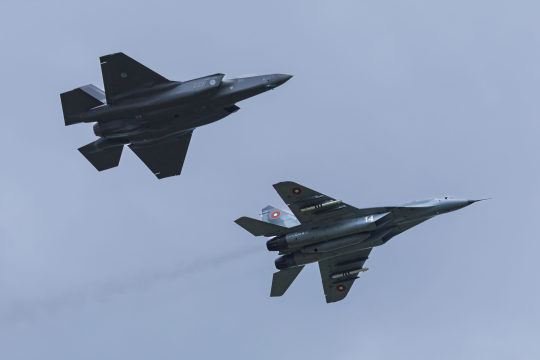
War in Ukraine should serve to strengthen Europe's air power ambitions
Fernando Valduga By Fernando Valduga 06/15/2022 - 07:18 AM in Military
Russia's invasion of Ukraine is a strong reminder that NATO members of Europe need to spend more wisely - and not simply spend more - to strengthen their collective defense against unjustified aggression.
Kyiv's success so far in weakening the Moscow armed forces provides an indicator of where at least part of the additional investment and focus should go, especially in aerial and counter-aircraft systems, as well as in what are sometimes called combat facilitators.

The needs are short and medium to long term. In the short term, continuing to improve air and missile defense would reinforce the conventional deterrence of European NATO members, providing the ability to better deal with the threat of short-range ballistic missiles and long-range cruise missiles.
Both types of systems have been widely used by Russian forces in attacks on Ukraine, although often with irregular success. Still, Russia's existing threat and military doctrine are clear. Thus, better defense against ballistic and cruise missiles would operationally benefit NATO and further strengthen the credibility of its conventional deterrence. The critical national infrastructure, otherwise, can become a critical vulnerability.
The importance of being able to degrade an opponent's ground air defense is also highlighted by the war in Ukraine. Russian attempts to eliminate Ukraine's surface-to-air missile systems and radar network seem fragmented, making Russian air operations riskier and limiting their freedom of action.
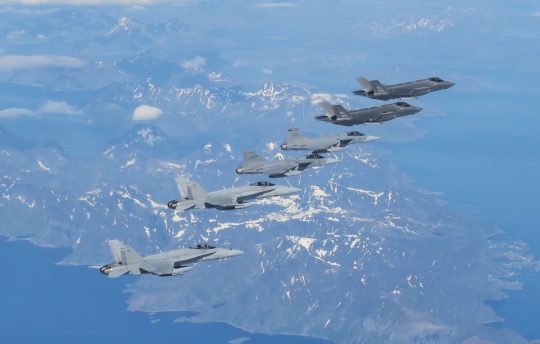
The suppression or destruction of enemy air defenses is now a growing priority for NATO air forces in any consideration of a confrontation with a rival, instead of using, for the most part, air power to support ground forces, as seen in recent counterinsurgency operations.
In the long term, the importance of command and control was reinforced by the Russian war, along with access to accurate and timely data from air and space assets. If Finland and Sweden become members of NATO, the alliance is likely to experience an improvement in the quantity and quality of data in relation to Russian military provisions and activities. But continuous investment from European states will be needed to meet capacity requirements, especially since the U.S. is also keeping an eye on possible Pacific-based contingencies.
Europe remains dependent on the US to a large extent for this type of information collection and coordination. And the same can be said for facilitators such as air mobility and air refuelers assets.

In addition, the continent will need to recapitalize its fleets of fighter planes. These future resources would probably remain in the local inventory for most of this century.
Europe has already embarked on the development of a next generation of multifunction combat aircraft and has managed to avoid a repetition of the 1980s, which saw the emergence of three competing projects: the French Rafale; the German, Italian, Spanish and British European fighter aircraft (now the Eurofighter Typhoon); and the Swedish JAS39 Gripen.
However, there is no European unanimity, with France, Germany and Spain seeking the Future Combat Air System, or FCAS, while the United Kingdom, Italy and Sweden are involved in what is dubbed Tempest.

Airbus/Dassault FCAS.
France is the leader in the FCAS, with the United Kingdom taking a similar, albeit arguably more accommodative, position in Tempest. London also looked beyond its traditional base of European partners, with Japan increasingly involved with elements of the Tempest project.
Although two rival projects - instead of a single pan-European combat aircraft - can be considered inefficient, at least they are underway. There is still the possibility of the two merging in some way, although the industrial division between the groups remains broad. There is also a question of how Franco-German political-industrial relations unfold.
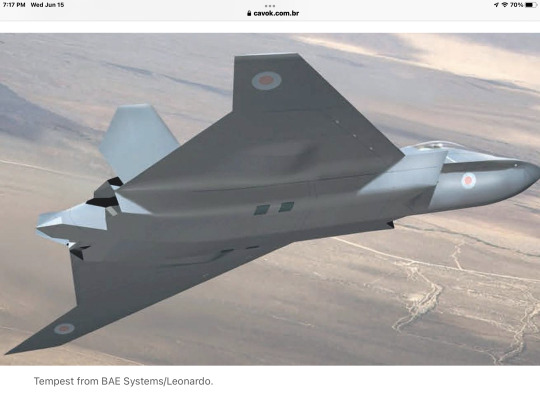
Tempest from BAE Systems/Leonardo.
Regarding the FCAS, it's not totally easy either. The German selection of the F-35 manufactured by Lockheed Martin to replace the Tornado in its commitment to NATO's nuclear role was not very well received by Paris, even if the acquisition is not a genuine threat to German participation in the FCAS program.
Source: Defense News
Tags: Military AviationNATO - North Atlantic Treaty OrganizationWar Zones - Russia/Ukraine
Fernando Valduga
Fernando Valduga
Aviation photographer and pilot since 1992, he has participated in several events and air operations, such as Cruzex, AirVenture, Dayton Airshow and FIDAE. He has works published in a specialized aviation magazine in Brazil and abroad. He uses Canon equipment during his photographic work in the world of aviation.
HOME Main Page Editorials Information Events Collaborate SPECIALS Advertise About
Cavok Brasil - Digital Tchê Web Creation
Commercial
Executive
Helicopters
History
Military
Brazilian Air Force
Space
SPECIALS
Cavok Brasil - Digital Tchê Web Creation
17 notes
·
View notes
Text
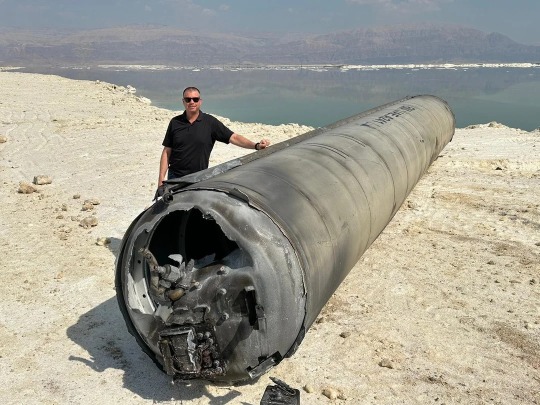
Intercepted Iranian Emad medium-range ballistic missile that landed in the Dead Sea...
0 notes
Text

With a couple very Liao mechs added to my collection recently, I've decided to go and start building myself a force of Capellans. With some vindicators, combat vehicles, and battle armor sorted I started digging around for some more CCAF designs to round out an augmented company. Then I remembered the Men Shen.
Don't let TRO:3060's janky visuals fool you, this walking gym shoe is one of the most technically advanced 'mechs the inner sphere built up to its intro date, Hellespont Industrials and the Confederation's Ministry of Appropriations spared no expense when they outfitted their first domestically designed omnimech. The 'mech is built around the heart and bones of a Magna 330 XL fusion engine seemingly designed expressly for the Men Shen and a 55 ton endo steel frame, with a normal top speed of nearly 100 kph, augmented up to 130 kph in short bursts by the 'mech's integral myomer accelerator signal circuits. This speed is paired with a thick skin, with the mech mounting 11 tons of standard armor, more than 95% the chassis possible total protection and enough for every component except the arms and head to take an AC/20 shot without internal damage. The mech carries 10 double heat sinks and an active probe fixed to the chassis, with the remaining 17 tons available as pod space.

The Men Shen MS1-O mounts a single LRM-15 with an attached Artemis IV fire control unit in its torso and a pair of medium pulse lasers in each arm. Intended as an all range skirmisher, the Prime configuration can leverage its speed to keep the range open while harassing with its missiles before driving in to deliver a finish off foes or pick appart scouts and picket mechs with its quartet of lasers. While the endurance of the LRM is somewhat questionable given it only comes with a single ton of ammunition, the speed at which the MS1-O depletes its missiles is probably a good thing given the XL engine and lack of CASE.
The Men Shen's alternate configurations fall into roughly three groups- either serving as remixes of the Prime's role, specializing in hunting non-mechs in a combined arms environment, or working as medium range strikers and forward operating units.
The Delta and Golf are Prime lookalikes, pairing a long range weapon (an ERPPC and a TSEMP cannon, respectively) with a payload of pulse lasers and SRMs to harass and disable mechs at long range before closing for a finishing blow. Unlike the Prime, these designs lack minimum ranges on their weapons, but the heat build of a full alpha strike is risky enough to a mech without jump jets that both designs effectively work as bracket fire machines.
The Beta and Echo configurations are combined arms killers, packing specialized ballistic weapons in their arms supported by a more generalized torso loadout. In the Beta's case this is a pair of LB2-X autocannons supported by a quartet of ER medium lasers, effectively making it a fast, high tech version if the BJ-1 Blackjack and ideal for hunting VTOL and aerospace assets with its flack guns. This configuration is also possibly the very first inner sphere mech to mount the LB2-X autocannon despite it supposedly being invented in Davion space. Chalk one up for the Maskirovka. Where the Beta makes helicopter pilots sweat, the Echo is an infantryman's nightmare demon. It mounts 8 light machine guns arranged into two arm mounted machine gun arrays, supported by a plasma rifle and 2 medium lasers in the torso. On average this thing will brrrrt an entire platoon of inner sphere ground pounders to mulch with every trigger pull, and the crit seeking/random heat mean it's not too much of a slouch in mech combat either. The 4 tons of ammunition does mean it is worryingly explosive, though.
Finally the Alfa, Charlie, and Foxtrot are the mid range strikers. The Alfa pairs a trio of ER Medium Lasers with an LB 10-X autocannon to deliver a decent ammount of firepower at close and medium ranges, backed up by a TAG laser designator to call in artillery and LRM strikes from the rest of your force. The Charlie and Foxtrot are very much like each other, using pairs of accurate, high damage energy weapons to make for any light mech's worst day. The Charlie chooses a pair of large pulse lasers supported by a Guardian ECM suite and an ER small laser to hunt things like Locusts and Striders while shutting down enemy electronics such as C3 spotters. The Foxtrot swaps the pulse lasers for a pair of snub nosed PPCs linked to a targetting computer to wreak havoc with its disgustingly long short range (270 meters!) and brings a TAG to make sure Marty the Arty will lay low anything its particle cannons can't. The Charlie and Foxtrot's placement of their main guns in the arms also makes them the best versions of the chassis to carry battle armor into fights with.

The Men Shen is best deployed as a 'cruiser' of battlemechs- calable of outfighting anything it can't outrun and outrunning anything that outguns it fairly easily. It will likely operate best at the front of formations to scout and probe the line of battle until the main battleline of mechs arrives, at which point it shifts to outflanking and finishing off wounded units.
Despite its durability, speed, and weapons options, the Men Shen isn't without flaws- the lack of jump jets mean that it can easily get bogged down in cities or other rough terrain and while it's speed and thick armor mean it can tough through some pretty heavy shots, the XL engine means that it won't survive drag out fights for particularly long. The cost is also fairly prohibitive- while most variants run between 1400 and 1700 BV, the MS1-O is a whopping 16.6 million c-bills. For the same price, you could by an entire company of urbanmechs, or a full lance of Vindicator 3L's. This price and the operational fragility of an XL engine paired with unCASEed ammo will likely make campaign commanders balk and relegate the design (like many omnis) to hangar queen status. As a player of mostly pickup games, though, it's a design I'm excited to run
#battletech#battlemech#mech talk#medium mech#men shen#cappies are weirdly good mech designers with a taste for expensive machines#for a faction that's basically always running on an austerity military industrial budget#i guess the CCAF can have a pricy mech as a treat sometimes when they get bored of requisitioning 500 new vindicators#please CGL give this thing new linearts/models
15 notes
·
View notes
Text
Pakistan Remains Prepared for the First Nuclear War: Revelation 8
Driven by contentious India ties, Pak sustained nuclear programme despite economic turmoil: Top US intel official
FP Staff • April 16, 2024, 13:45:23 IST
“Islamabad is modernising its nuclear arsenal and improving the security of its nuclear materials and nuclear C2 (command and control). In October, Pakistan successfully tested its Ababeel medium-range ballistic missile,” US intelligence…
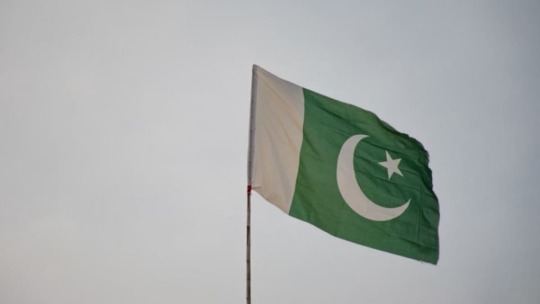
View On WordPress
0 notes